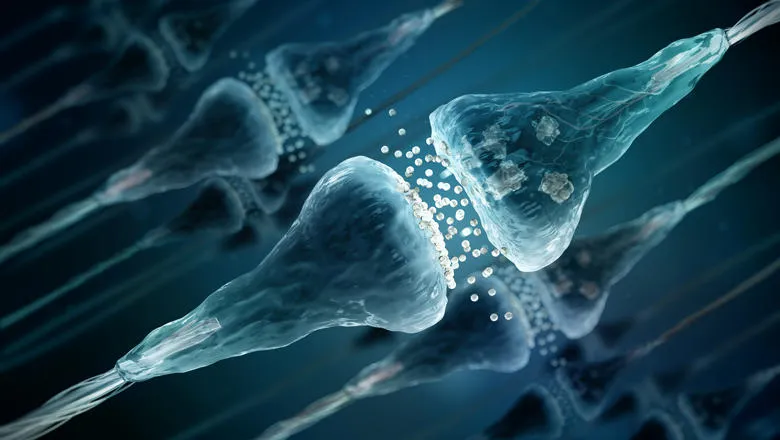Problems with the brain's ability to 'prune' itself of unnecessary connections may underlie a wide range of mental health disorders that begin during adolescence, according to research published today.

The findings from an international collaboration led by researchers in the UK, China and Germany, published today in Nature Medicine, may help explain why people are often affected by more than one mental health disorder. In the future, the study may help identify those at greatest risk.
The researchers examined data from the 1,750 adolescents aged 14 years from the IMAGEN cohort, a European research project examining how biological, psychological and environmental factors during adolescence may influence brain development and mental health. To validate their findings, they used cohorts of young people with mental health disorders, including the UKRI-funded ESTRA project, that investigates young people with eating disorders (anorexia nervosa or bulimia nervosa) that were assessed with IMAGEN study protocols.
The ESTRA project and the UK-led part of the IMAGEN project are hosted at the Social, Genetic & Developmental Psychiatry Centre (SGDP) at the Institute of Psychiatry, Psychology & Neuroscience (IoPPN), led by co-author on the paper, Professor Sylvane Desrivieres.
In the study, researchers examined imaging data from brain scans taken while participants took part in cognitive tasks, looking for patterns of brain connectivity – in other words, how different regions of the brain communicate with each other.
The researchers identified a characteristic pattern of brain activity among adolescents with mental health disorders, such as depression and anxiety, and behavioural disorders like attention deficit hyperactivity disorder (ADHD). They have termed this brain activity pattern 'neuropsychopathological factor', or NP factor for short.
Adolescents who experienced mental health problems – regardless of whether their disorder was one of internalising symptoms (e.g., low mood and worrying) or externalising symptoms (e.g., impulsive behaviour), or whether they experienced multiple disorders – showed similar patterns of brain activity. These patterns – the NP factor – were largely apparent in the frontal lobes, the area at the front of the brain responsible for executive function, which, among other functions, controls flexible thinking, self-control and emotional behaviour.
The researchers confirmed their findings by replicating them in 1,799 participants from the ABCD Study in the USA, a long-term study of brain development and child health, and by studying patients who had received psychiatric diagnoses, including eating disorder patients from the ESTRA study.
When the team looked at genetic data from the IMAGEN cohort, they found that the NP factor was strongest in individuals who carried a particular variant of the gene IGSF11 that has been previously associated with multiple mental health disorders. This gene is known to play an important role in synaptic pruning, a process whereby unnecessary brain connections – synapses – are discarded. Problems with pruning may particularly affect the frontal lobes, since these regions are the last brain areas to complete development in adolescents and young adults.
As we grow up, our brains make more and more connections. This is a normal part of our development. But too many connections risk making the brain inefficient. Synaptic pruning helps ensure that brain activity doesn't get drowned out in 'white noise'. Our research suggests that when this important pruning process is disrupted, it affects how brain regions talk to each other. As this impact is seen most in the frontal lobes, this then has implications for mental health.– Dr Tianye Jia from the Institute of Science and Technology for Brain-Inspired Intelligence, Fudan University, Shanghai, China and a visiting researcher at King's IoPPN, collaborating with Professor Sylvane Desrivières
One in seven adolescents (aged 10-19 years old) worldwide experiences mental health disorders, according to the World Health Organization (WHO). Eating disorders, depression, anxiety and behavioural disorders, such as ADHD, are among the leading causes of illness and disability among young people, and adolescents will commonly have more than one mental health disorder. Many of these mental health problems emerge during adolescence.
Professor Barbara Sahakian from the Department of Psychiatry and the University of Cambridge, said: "Young people often experience multiple mental health disorders, beginning in adolescence and continuing – and often transforming – into adult life. This suggests that there's a common brain mechanism that could explain the onset of these mental health disorders during this critical time of brain development."
The researchers say that the discovery of the NP factor could help identify those young people at greatest risk of compounding mental health problems.
Professor Jianfeng Feng from Fudan University in Shanghai, China and the University of Warwick, UK said: "We know that many mental health disorders begin in adolescence and that individuals who develop one disorder are at increased risk of developing other disorders, too. By examining brain activity and looking for this NP factor, we might be able to detect those at greatest risk sooner, offering us more opportunity to intervene and reduce this risk."
This study was funded by the National Natural Science Foundation of China, European Union, Medical Research Foundation (UK) and Medical Research Council (UK), the National Institute for Health & Care Research (UK) and the National Institutes of Health (NIH, USA).
'A shared neural basis underlying psychiatric comorbidity' (Chao Xie et al.) was published in Nature Medicine. DOI: 10.1038/s41591-023-02317-4






